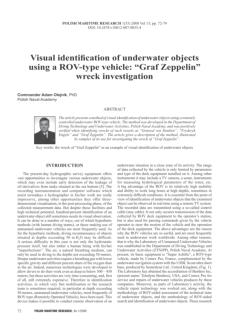Underwater archeology - Papers from 1960 to 2011

Authors:
Daniel Warre, Robert Church, Dr. Roy Cullimore, Lori
Johnston
In October 2003, investigations were undertaken by C & C
Technologies Inc., in conjunction with the NOAA Office of
Ocean Exploration, Droycon Bioconcepts, Inc. and the PAST
Foundation, to document the wreck site of the DKM U-166
in 5,000 feet of water in the Mississippi Canyon Area of the
Gulf of Mexico. At the time, the project was the deepest
archaeological investigation ever conducted in the Gulf of
Mexico. This project marked one of the first instances that
positioning technology that is routinely used in the offshore
oil and gas industry was utilized on a deepwater
archaeological investigation of a shipwreck.


Authors:
G. Conte, S. M. Zanoli, D. Scaradozzi, L. Gambella, & V.
Calabrò
This paper proposes a methodology for a marine
archeological survey to extract as much information as
possible from a site with minimal time and in a non-invasive
way. In general, this is done by taking photos and
measurements of objects and terrain, which are then used
to construct representations of the site in the form of maps.
In the proposed approach, standard manual procedures for
structuring the site and for gathering data of the type, as
mentioned above, have been redesigned to exploit the
potential of beneficial cooperation between human
operators and robotics devices, such as ROVs.


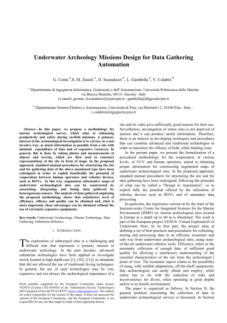

Publisher:
The American School of Classical Studies at Athens
In 2005 a Greek and American interdisciplinary team
investigated two shipwrecks off the coast of Chios dating to
the 4th-century b.c. and the 2nd/1st century. The project
pioneered archaeological methods of precision acoustic,
digital image, and chemical survey using an autonomous
underwater vehicle (AUV) and in-situ sensors, increasing
data acquisition speed while decreasing costs. The AUV
recorded data revealing the physical dimensions, age,
cargo, and preservation of the wrecks. The earlier wreck
contained more than 350 amphoras, predominantly Chian
type, while the Hellenistic shipwreck contained about 40
Dressel 1C amphoras. Molecular biological analysis of two
amphoras from the 4th-century wreck revealed ancient
DNA of olive, oregano, and possibly mastic, part of a cargo
outbound from Chios.

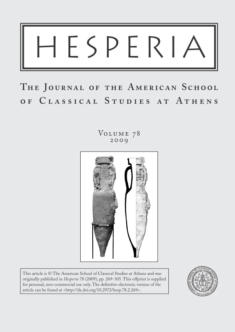

Authors:
J. Batryn, A. Gonzalez, J. Lehr, T. Gambin, C. Forney, J.
Forreste, B. Bagley, W. McVicker, J. White, T. Smith, C.M.
Clark, and Z.J. Wood.
The authors present a methodology and algorithm for the
reconstrucion of three-dimensional geometric models of
ancient Maltese water storage systems, i.e., cisterns, from
sonar data. This project was conducted as a part of a four-
week expedition on the islands of Malta and Gozo.
During this expedition, investigators used underwater robot
systems capable of mapping ancient underwater cisterns
and tunnels. The mapping included probabilistic algorithms
for constructing the maps of the sonar data and computer
graphics for surface reconstruction and visualization.

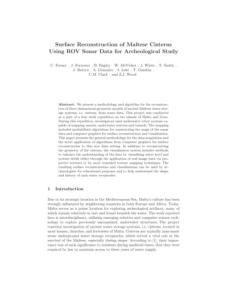

Authors:
B. Allotta, A. Caiti, M. Cocco, C. Colombo, W. Daviddi, L.
Gualdesi, D. La Monica, D. Moroni, G. Pieri, O. Salvetti, & M.
Tampucci.
This project aimed to develop multidisciplinary
methodologies and technologies to detect, catalog, and
document underwater artifacts and wreckage with
archaeological and ethno-anthropological value. In
particular, specially designed Autonomous Underwater
Vehicles (AUVs) were used to systematically explore the sea
floor, collecting and analyzing in real-time heterogeneous
data from acoustic, optical, and magnetic sensors to
promptly detect objects of interest.

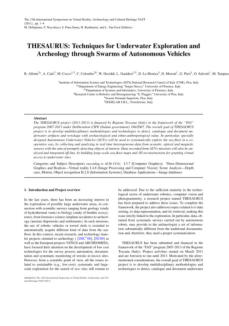


Author: John D. Broadwater
Abstract:
The Yorktown Shipwreck Archaeological Project has
employed ocean technology for the location, assessment
and excavation of ship-wrecks from the Battle of
Yorktown,1781. A total of nine shipwrecks was located,
using remote-sensing surveys. The best-preserved of the
shipwrecks was excavated using a unique method: a steel
enclosure, or cofferdam, was
constructed around the shipwreck, and filtration systems
were used to clarify the enclosed water, thus alleviating
strong currents and near-zero visibility which hampered
previous research. During the excavation, recording was
accomplished using a three-dimensional measurement
system. Final hull
measurements were recorded with a device which
utilizes high-frequency sonic signals to provide precise
measurements. A computer-aided design and drafting
(CADD) system provided analysis and report-quality
drawings.

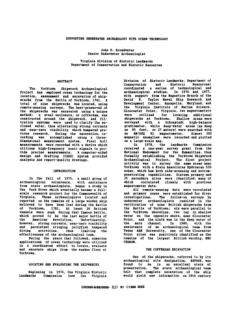

Authors: M McCarthy, K Hosty, and C. Philippou
Provided by James Hunter (Curator of Naval Heritage and
Archaeology at the Australian National Maritime Museum)
This document summarizes the topics discussed during the
2006 Australian seminar on iron, steel, and steamship
archaeology in Fremantle, Melbourne, and Sydney.

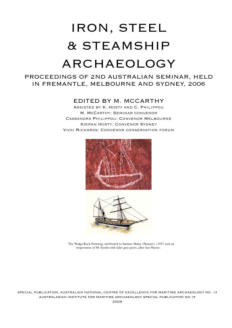

Authors: Robert H. Pritchett III, William K. Seliger
This book is the product of the authors' research, personal
experiences, consultations with experts, and thousands of
dives looking for shipwrecks and the most productive lease
area for Anchor Research & Salvage, SRL (see website
www.arsdr.com).

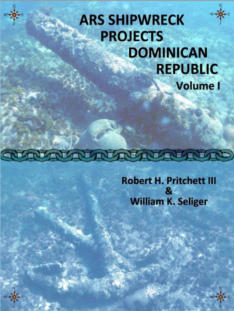

Georges Bass is a prolific author and a recognized
archeologist who organized numerous operations and
taught in many universities.
In this book, he explains the development of scientific
underwater archeology and the methods still currently used
with the help of new technologies.



This book is a compilation of several articles from recognized
scientists regarding wreckages found in the Americas.

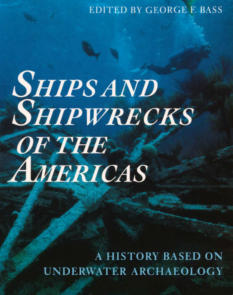

This book chronologically describes various examples of
wreckages:
1.
The oldest wrecks
2.
Ancient greek wrecks
3.
Roman and Byzantine wrecks
4.
Medieval and renaissance wrecks
5.
Seventeen-century wreck
6.
Eighteen-century wreck
7.
Wrecks of modern times

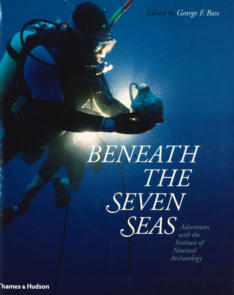

James Hunter is the Naval Heritage and Archaeology
curator at the Australian National Maritime Museum.
This paper the process of discovery, identification, and
archaeological investigation of the remains of the
“Mosquito”, an Australian 2nd-class torpedo-boat, launched
in 1883 and abandoned on the foreshore of a tributary of
the Brisbane River in 1913, where it has been stripped.
The history of the ship is also discussed.



During the long time span from 1 million years B.P to
10,000 B.P, the human race colonized all the continents of
the earth (with the exception of Antarctica) and most of the
major islands. The dates of these colonizing migrations are
not known, even approximately, although some of them
involve crossing channels that are now wide sea straits,
such as the Timor Sea and the Celebes Sea between
Indonesia and Papua New Guinea-Australia (which were
one continent during the glaciations) or the Bering Strait
between Siberia and Alaska. This spread of the human race
across the globe is poorly
understood, though it must be counted one of the most
important processes in human history.

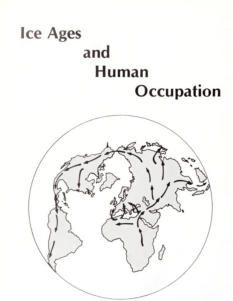

This article describes underwater archaeology through the
following topics:
Aims
The Environment
Methodology, techniques, and equipment
Sites and structures
Artifacts
Publications, organizations, and conferences
Key Issues

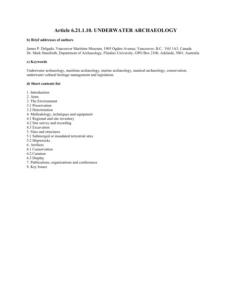

Published in 2013 by the United Nations Educational,
Scientific and Cultural Organization Endorsed by the
Scientific and Technical Advisory Body of the 2001
Convention on the Protection of the Underwater Cultural
Heritage
Authors: Eusebio Dizon, Barbara Egger, Dolores Elkin, Pilar
Luna Erreguerena, Robert Grenier, John Gribble, Ulrike
Guérin, Emad Khalil, Martijn Manders, Thijs Maarleveld,
Jean-Bernard Memet, Jasen Mesi´c, Xavier Nieto Prieto,
David Nutley, Iwona Pomian, Della Scott-Ireton, Athena
Trakadas and Robert Veccella.
Editors: Prof. Dr. Thijs Maarleveld, Dr. Ulrike Guérin, Barbara
Egger
Scientific responsibility: Prof. Dr. Thijs Maarleveld

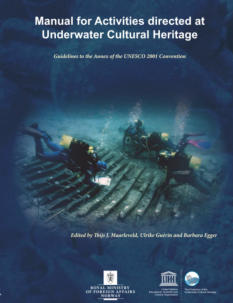

ICOMOS is a non-governmental international organisation
dedicated to the conservation of the world's monuments
and sites.
International Secretariat - 11 rue du Séminaire de Conflans -
94 220 Charenton-le-Pont, France
Tel. + 33 (0) 1 41 94 17 59 - E-mail: secretariat@icomos.org
The International Committee on the Underwater Cultural
Heritage (ICUCH) was founded in 1991 by ICOMOS
Australia to promote international cooperation in the
protection and management of underwater cultural
heritage and to advise the International Council on
Monuments and Sites (ICOMOS) on issues related to
underwater.
This document has been provided by Dr. Antony Firth

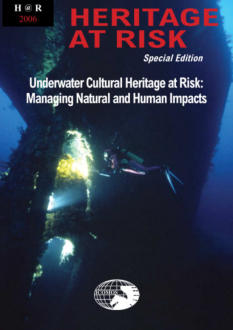

Sub Marine Explorer was an innovative vessel that was
conceived and launched in 1865-1866 with the twin
demands of the American Civil War and the Panamanian
pearl fishery in mind. The product of the German immigrant
ironworker Julius H. Kroehl, a gifted underwater engineer
and inventor, Sub Marine Explorer was one of the most
important and successful developments in the early days of
the submarine boat. It was one of two technological
successes and is one of only five submarines known to exist
from that early period. It is the only one built for use by the
Union still in existence, giving it an iconic status along with
its contemporary, the confederate submarine HL Hunley.
Nonetheless its presence at the remote Isla San Telmo in the
Archipielago de las Perlas, Panama was unknown until
2001.

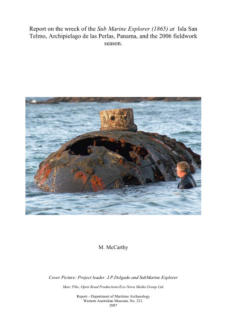

Authors:
Brent M. Wilson, Donald L. Johnson, Hans VanTilburg,
Matthew A. Russell, Larry E. Murphy, James D. Carr, Robert
J. De Angelis, and David L. Conlin
The assessment of corrosion on the USS Arizona included
the pioneering development of a minimum-impact cost-
effective technique to determine the corrosion rate of steel-
hulled shipwrecks in seawater. The technique, with
potential application worldwide, is illustrated in this paper
with the application to a World War II Japanese midget
submarine submerged in deep waters off the Oahu,
Hawaii, coast.



This document has been provided by Hans Van Tilburg.
This Manual is the result of an effort to establish state-of-the-
art management and protection of submerged
archaeological sites in light of UNESCO’s Convention on the
protection of the Underwater Cultural Heritage of 2001. It is
intended for use as a reference tool by site managers,
stakeholders, and partners in the protection of underwater
cultural heritage and by persons
responsible for training courses in underwater archaeology.

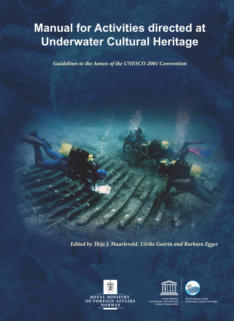

Author: Jennifer McKinnon
Saipan is the capital and one of the fifteen islands
of the Commonwealth of the Northern Mariana
Islands (CNMI), part of the larger Micronesian
archipelago called the Mariana Islands.
In June and July of 1944, the Battle for Saipan was
one ofthe largest amphibious invasions launched by
the USA during the Second World War in the Pacific. Much
of the Undrwater Cultural Heritage research conducted in
Saipan has been undertaken specifically on WWII sites.

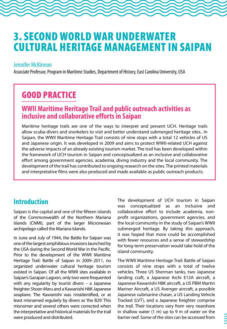

Authors: N.C.Flemming, G.N.Bailey, V.Courtillot, G.King,
K.Lambeck, F.Ryerson, & C.Vita-Finzi
Submarine prehistoric archaeological sites on
Mediterranean coasts contribute to understanding human
migrations in the last 2 million years. "Out of Africa", "Multi-
regional", and "Trellis" models of human origins and
dispersal depend on what environments attracted hominid
and modern human occupation and how temporal and
spatial variations in environments facilitated or impeded
population dispersal and gene flow. A determining factor
for migration routes and possible two-way dispersal across
potential boundaries was the level of the world ocean and
the degree of obstruction presented by straits, channels,
estuaries, and semi-enclosed seas...



Authors: Koenraad Van Balen, Thijs J. Maarleveld
This project attempts to introduce the Underwater Cultural
Heritage from the points of view of world heritage
organizations (such as UNESCO and ICOMOS), to give a
brief history of the development of Underwater Cultural
Heritage conventions, to present a general overview of the
archaeological experiences in the world, and specifically
Belgium to deal with the problems of criteria and applying
the conventions, and finally, to depict a future perspective
of Underwater Cultural Heritage in Belgium and to
introduce some cases.


Author: Michael Jones & Rebecca Ingram
The post-excavation documentation of two Byzantine
merchantmen from the Theodosian Harbor excavations at
Yenikapı continued throughout 2011 at the Institute of
Nautical Archaeology (INA)’s Bodrum Research Center in
Bodrum, Turkey.
These two ships, Y.K. 11 (c. seventh century C.E.) and Y.K. 14
(c. 900 C.E.), were excavated and dismantled in 2008 and
2007, respectively, at the Yenikapı excavation in Istanbul,
Turkey. They are part of a group of eight shipwrecks from
the Yenikapı site being studied by a team of archaeologists
under the directorship of Dr. Cemal Pulak, associate
professor at Texas A&M University and Vice President of
INA.

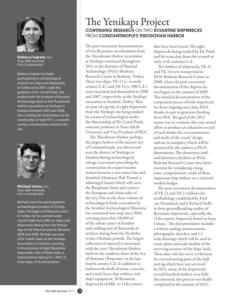

Authors: Julie Satchel & Paola Palma
This publication is the result of the international
conference on Managing the Marine Cultural Heritage
which was organized by the Maritime affairs group of the
institute of field archaeologists, held in September 2004. The
conference invited speakers from around the world to
share their experiences through presentations to an equally
international audience which included representatives from
five continents.
The aim was to disseminate information on approaches to
marine heritage management, which included new ideas,
trials, developments, and best practice models, to promote
understanding and initiate dialogue between heritage
practitioners, managers, and curators.

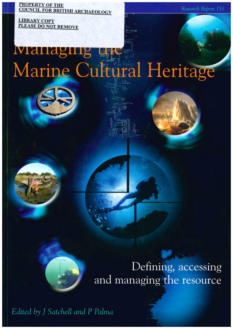


Edithors: Vicki Richards, Jennifer McKinnon
This paper summarizes the combined annual conference
for the Australasian Institute for Maritime Archaeology, the
Australasian Society for Historical Archaeology, and the
Australian Association for Maritime History was held at the
magnificent Institute Building of the State Library of South
Australia in Adelaide in September 2008. Over the three
days of the conference, there were six plenary lectures
presented by six international guest speakers and nine
conference sessions featuring fifty presentations.

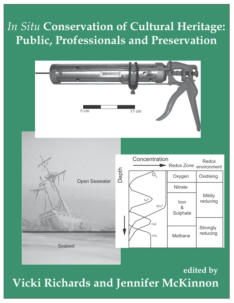

This thesis develops a new methodological approach to
the archaeology of Australian Colonial maritime landscapes
and communities, based on a critical reading and
evaluation of international advances in cultural landscape
theory and research.



This report is about Sophia Albertina; a Swedish ship
foundered in Dutch waters in 1781. In 2004 the Cultural
Heritage Agency's diving team explored the wreck of the
Sophia Albertina. Alice Overmeer demonstrates in this
paper that this wreck is indeed that of the Swedish ship, the
Sophia Albertina, making it one of the few in Dutch waters
officially identified.

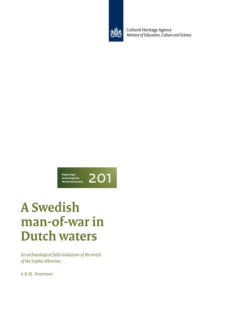

Authors: Martijn R. Manders, Hans K. Van Tilburg, and
Mark. Staniforth.
This unit from the training manual for the UNESCO
Foundation Course on the Protection and Management of
Underwater Cultural Heritage in Asia and the Pacific
introduces the concept of significance in managing
underwater cultural heritage.
It is published with the agreement of the authors.

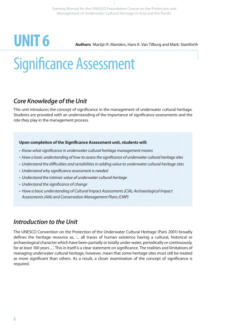

Seafaring, water transport, and water management are the
main characteristics of Dutch culture. Keeping the water
out, and making good use of it, have qualified life in the
low-lying estuarine and tidal regions every time they were
inhabited. Consequently, the Dutch landscape is
commanded by waterways and drainage systems, so Dutch
cities are canal-ridden where maritime heritage is
paramount.
The realization of the national land reclamation project
partitioning the Zuiderzee and creating the
"Usselmeerpolders" first added a profusion of archaeological
ships to the care of heritage management.

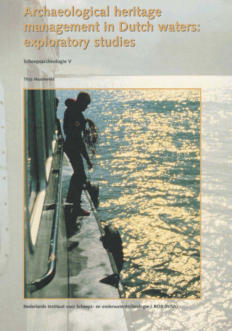

- Presented by Sorna Khakzad
- Promoters: Prof. Koenraad Van Balen - Prof. Thijs J.
Maarleveld
Underwater archaeology- or "underwater cultural heritage",
as the world heritage organizations call it, is a relatively new
area of heritage and is going to be more and more crucial
and remarkable as a part of human heritage. This project
attempts to introduce the "Underwater Cultural Heritage"
from world heritage organizations (such as UNESCO and
ICOMOS).

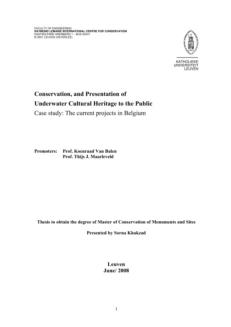

Six RAN submarines, all of one class, launched in 1916,
were scuttled in Victorian waters of varying depths
between 1922–1930. This provided a unique opportunity
to study the parameters affecting shipwreck corrosion
while simultaneously controlling for most other variables,
such as date built, mode of construction, and service
histories. They also provide an excellent training bed for
those seeking to examine the wreck of the iconic Australian
submarine AE2 in deep water near the Dardanelles in
Turkey.

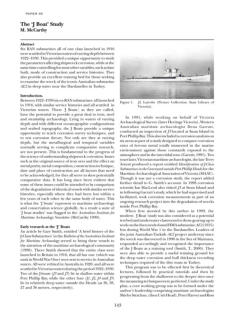

Author: Christopher todd Dewey
This paper examines the site formation processes of the US.
Steamer Convoy that burned and sank in Pensacola Pass in
March 1866 and the search for the Confederate Schooner
William H. Judah that burned and sank in the same vicinity
five years earlier.
The vessels' civil war histories are discussed, as well as the
deliberate and opportunistic salvage operations conducted
on the convoy's wreck site during the 19th and 20th
centuries.

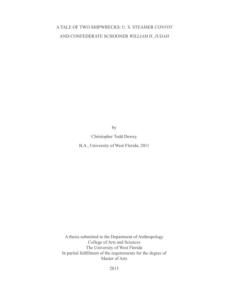



Author: Nathan Richards
This thesis is an examination of deliberately discarded
watercraft in Australia.
It represents a comparative, non-particularist approach
that seeks to understand abandoned vessels within a
diverse theoretical framework. This view sees the remains of
abandoned watercraft as an important component of
Australian maritime heritage with the potential to shed light
on a number of areas

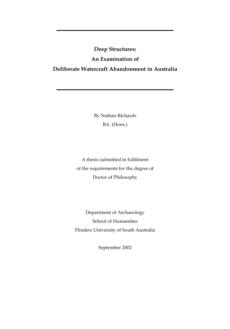

Document provided by Jennifer McKinnon
This document groups analyses of 23 publications by
eminent specialists

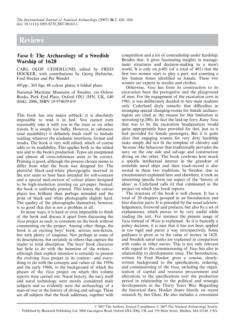

Author: M. McCarthy
This paper provides a background to the 2006 celebrations
and outlines the breadth ofthe SS Xantho studies since the
first Australian on-site practical and theoretical seminar on
iron and steamship archaeology in 1985. It also examines
other developments in iron, steel and steamship
archaeology in Western Australia since that time.

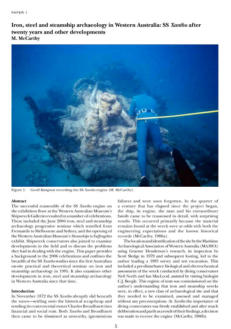

Author: George Bass
In this book Dr Georges Bass describes in detail the sinking
of the “Atlantic” in November 1846. He also makes a quick
review of his underwater archaeologist carrier.

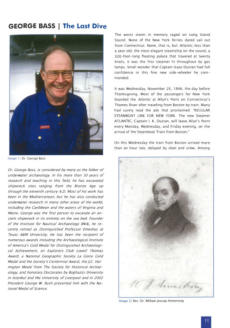

Document provided by Maria Mendes
This document groups analyses of 34 publications by
eminent specialists.

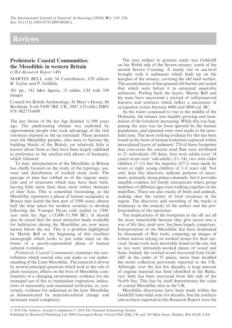

Author: Sean Kingsley
In the course of the marine archaeology session held at the
Underwater Intervention conference in New Orleans on 11
February 2010, a panel discussion was convened to explore
the perceived merits and potential pitfalls of UNESCO’s
Convention on the Protection of the Underwater Cultural
Heritage 2001.

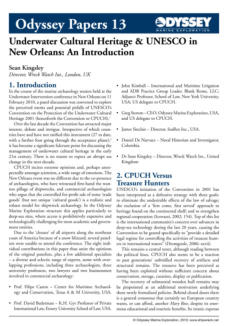

Authors: David Parham & Micheal Williams
In May 1989, the Joint Nautical Archaeology Policy
Committee (JNAPC) launched its classic document Heritage
at Seal and put forward proposals for the better protection
of archaeological sites underwater.
(http://www.jnapc.org.uk/index.htm)

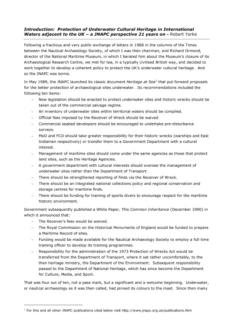

Author: Georges Bass
The ethics of underwater archaeology should be exactly
the same as the ethics of terrestrial archaeology. There are,
however, areas in which underwater archaeology does
differ from dry-land archaeology, which presents special
ethical concens.



Authors: Susan B.M. Langley & Brian A. Jordan
An archeological overview and assessment of maritime
resources in Maryland State waters from Ocean City to the
Virginia State Line, Worcester County, is being undertaken
in two parts by the Maryland Historical Trust, for the
Department of Natural Resources’s Coastal Zone
Management (CZM) Program, pursuant to DNR Contract
14-08-12241 CZM 161. This study is intended to support
planning and management purposes and to comply with
CZM program mandates.

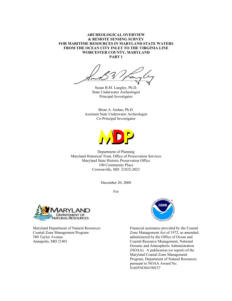

Authors:
Mark Stantforth, James Hunter and Emily Jatejf
This chapter considers international approaches to
Underwater Cultural Heritage such as the United Nations
Convention of the Law of the Sea (UNCLOS) the 1996
ICOMOS Charter for the Protection and Management of
Underwater Cultural Heritage and the 2001 UNESCO
Convention on the Protection of the Underwater Cultural
Heritage. The paper will also consider three case studies:
The United States. Australia
and Spain, to examine different national approaches to
underwater cultural heritage law.

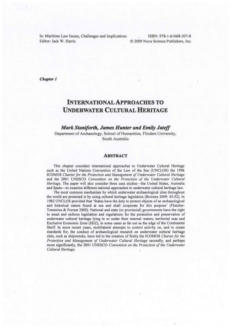

Author: Shelly Wachsmann
Coastal waters represent the greatest danger to ships and
seafarers, despite the persistence of a modern myth that has
ancient mariners hugging the shore for safety. It is precisely
here, at the intersection of water and shore, that ships are
most commonly lost. It is doubtful that this fact was lost on
ancient seafarers.

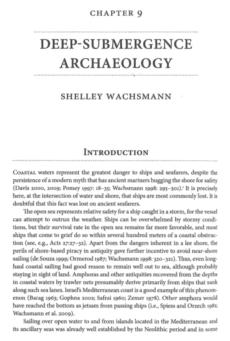

Author: Christopher todd Dewey
This paper examines the site formation processes of the US.
Steamer Convoy that burned and sank in Pensacola Pass in
March 1866 and the search for the Confederate Schooner
William H. Judah that burned and sank in the same vicinity
five years earlier.
The vessels' civil war histories are discussed, as well as the
deliberate and opportunistic salvage operations conducted
on the convoy's wreck site during the 19th and 20th
centuries.

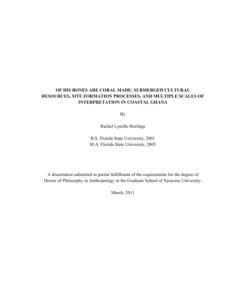

Author: M. McCarthy
This paper examines the processes that have led to a
broader recognition of the submerged aircraft as a maritime
archaeological site. Ethical issues, site formation processes,
conservation, site management strategies, and legal matters
are examined, along with the protection of a suite of fifteen
aircraft by a Conservation Order promulgated under the
Heritage of Western Australia Act 1990.

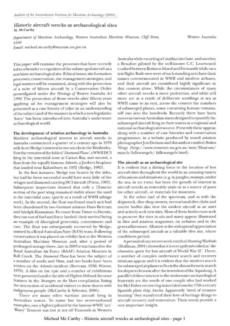

Author: Vasif Hahoglu
Aegean prehistory became a research subject in the 19th
century through the work of both travelers and
archaeologists and has increasingly continued to draw the
attention of archaeologists. Research on mainland
Greece, Crete and in the Cyclades has enabled the
definition of cultural areas that developed independently
but with continuous contact with each other.
Archaeological work in these areas has enabled the
definition of Helladic, Minoan and Cycladic cultures in
mainland Greece, Crete and the Cyclades, respectively.

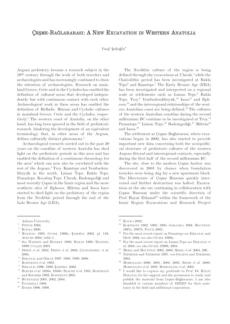

Authors: Jennifer McKinnon & Jason Raupp
This document, published in 2007 by the Department of
Archaeology, Flinders University Adelaide, South Australia,
makes a status of the operations undetaken in 2006

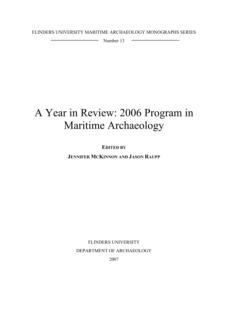

Authors: Tim Smith & Sarah Ward
New South Wales has an estimated 1800 historic shipwreck
sites and an active Historic Shipwrecks Program,
administered by the Heritage Branch, NSW Department of
Planning. Started in 1988, the program was established to
help the community manage fragile maritime
archaeological sites, both underwater and on land.



Author: Vicki Richard
The Busselton Jetty is located in Geographe Bay, a broad,
open, north-facing embayment between Cape Bouvard
and Cape Naturaliste on the southwest coast of Western
Australia. It is a relatively protected and shallow bay. Water
movement in Geographe Bay is mainly wind driven.
Geographe Bay has a relatively short flushing period of
3–15 days, dependent on the wind direction, and is,
therefore, a well-mixed system.

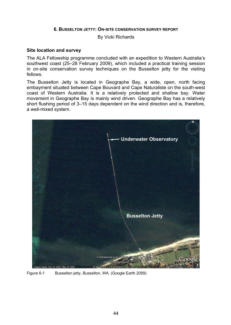

Authors:
K. O’Brien, S.Tikkanen, C. Lindblad, P.Flyg, A. Olsson,
O.Uldum, I. Aarestad, and D. Nævdal
Nordic Blue Parks is a concept that combines underwater
nature and cultural trails (wreck trails and trails at other
anthropogenic sites and constructions under water). The
project was initially designed to be a one year pilot, trying to
formulate criteria and guidelines for sustainable blue parks
and to set up trails to test these concepts in four Nordic
countries, i.e. Finland, Sweden, Norway and Denmark.

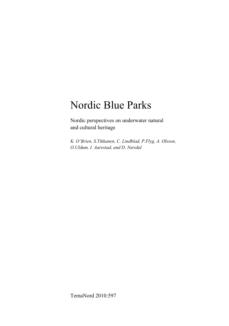

Authors: Thijs J Maarleveld
This Manual is the result of an effort to establish state-of-the-
art management and protection of submerged
archaeological sites in light of UNESCO’s Convention on the
Protection of the Underwater Cultural Heritage of 2001. It is
intended for use as a reference tool by site managers, by
stakeholders and partners in the protection of underwater
cultural heritage, and by persons responsible for training
courses in underwater archaeology.

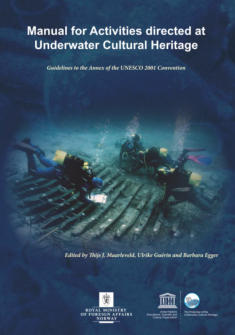

These Proceedings contain 24 papers presented at the 12th
Annual American Academy of Underwater Sciences
Scientific Diving Symposium, September 24-27, 1992, at the
University of North Carolina at Wilmington, Wilmington,
North Carolina. The Academy sponsors these symposia to
disseminate information and stimulate discussion on the
advancement of undersea science and technology.

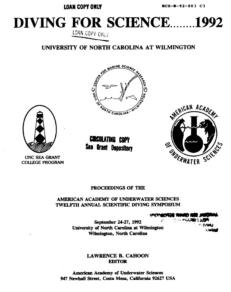

Authors: Neal W. Pollock
Persons with diabetes were banned from diving in the
United Kingdom (UK) after a serious case of decompression
sickness was misdiagnosed in 1975 as a hypoglycemic
event. Formal bans were subsequently established in many
countries, including the United States (US).
The UK ban was reversed in 1991, marked by a national
database to monitor the diving activity of persons with
diabetes. The database accumulated summary records of
14,000 dives by 447 persons with diabetes from 1991
through 2004, with minimal problems reported.

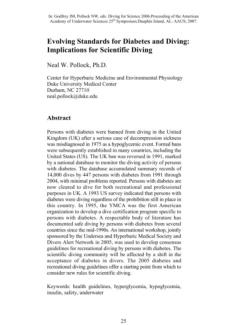



Click on the
octopus to return to
the top of the page


Author: Mahmoud Haydar
The intent of this thesis is to describe the objectives and
significance of the VENUS project, which aims to create a
Virtual Reality environment for the exploration and study of
underwater archaeological sites. The project seeks to
provide archaeologists with a reliable and efficient tool to
explore and analyze these sites, including the artifacts and
the seabed, to gather information necessary for dating and
understanding the history of the sites. Additionally, the
project aims to preserve these sites from potential threats
and make them accessible for both archaeologists and the
public.

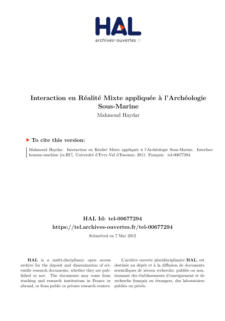

Author: B.I. Monsalve, D.R. McConnell, J. Worthen, L.
Landry, L. A
Archeological regulations by the Minerals Management
Service (MMS) from 2005 require comprehensive surveys to
find historical artifacts in the Gulf of Mexico before any
seafloor disturbance. These surveys must occur early in the
exploration phase, not just during planning. Integrating
high-resolution data can benefit various users, like those
assessing seafloor conditions. Operators should adjust
survey designs to include diverse data types for better
hazard characterization and avoid costly resurveying if the
site is developed.


43 - Strategies to Incorporate Pre-Development High-Resolution
AUV Surveys Acquired for Archeological Requirements into the
Project Lifecycle and Workflow.
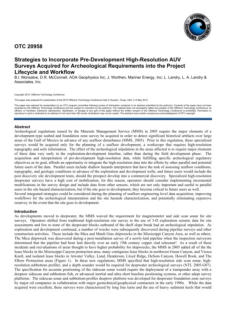
Author: Commander Adam Olejnik
This article introduces a remotely controlled underwater
ROV-type vehicle method for visual identification of
underwater objects, developed by the Polish Naval
Academy's Department of Diving Technology and
Underwater Activities. The procedure has been proven
successful in identifying wrecks of vessels like General von
Steuben, Frideryk Engels, and Graf Zeppelin.


28 - Visual identification of underwater objects using a ROV-type
vehicle: “Graf Zeppelin” wreck investigation
